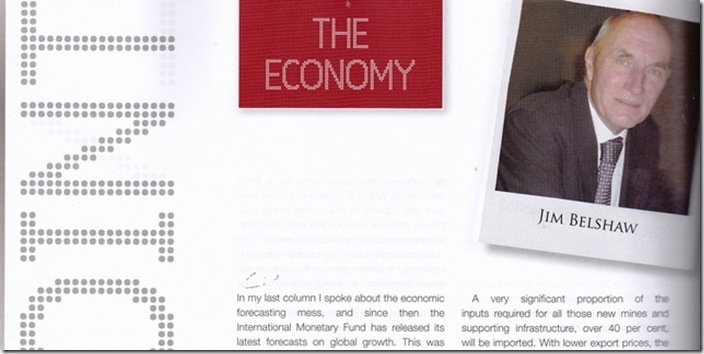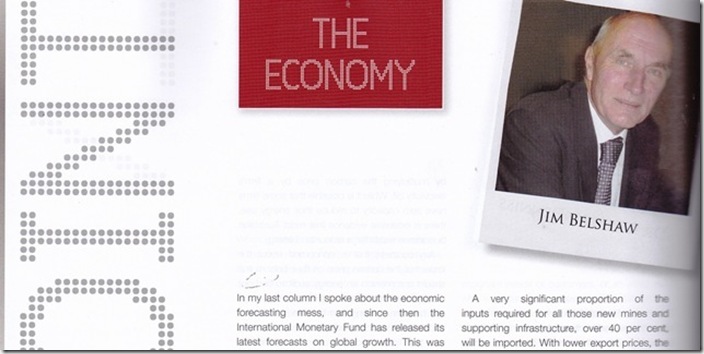
In an earlier column on the perils of forecasting, I spoke about the use and abuse of economic forecasts, including the way it creates something of a herd instinct among economists.
This creates the business problem I addressed in that column. How can you use the forecasts when they are so often and so dramatically wrong? In this regard, the last months of 2012 and the first part of 2013 were quite remarkable.
First China was seen to be growing, then contracting, then growing. Something similar happened to forecast iron ore prices and to forecasts on US economic growth. This type of yo-yo effect creates a further and more serious problem for business, policy instability. It is very difficult to plan, especially for businesses dependent in some way on the Government marketplace, when Government is so unreliable.
In all this turmoil, what can we say with a reliable degree of certainty?
The developed world is awash with money as a consequence of central bank action. All that cash will have to be sterilised at some point, but not immediately. This means that the Australian dollar is likely to stay higher than it would otherwise be, if only because our interest rates are higher.
This situation will turn round. Indeed, we saw recently how the currency dropped at just a hint of the end of quantitative easing. But for the present, now remains a good time to invest overseas or just take that trip. Not so good, of course, if you are an exporter or suffering import competition.
The present evidence is that the global economy is growing again, growth that is likely to continue for the immediate future. Barring unforeseen shocks, that will maintain demand for Australian exports. However, we have had our windfall gain.
The big mining investments that have taken place around the world mean that new supply is starting to come on stream. Our export volumes will go up, but there is likely to be downward pressure on prices, accentuated by rebalancing in the Chinese economy. So we should still see medium term export growth, but at a more subdued level.
For Australia, one critical issue is the timing of the required global cash sterilisation measures.
As global growth picks up, all that cash sloshing around is likely to feed into higher inflation and potential asset bubbles. Interest rates will rise as central banks refocus on inflation targets and on reductions in the now very high liquidity levels. In turn, the Australian dollar is likely to fall as the present real interest differential narrows.
The timing? Who can say! My feeling is that it’s likely to be sooner than most people expect.
So far, the impact of quantitative easing has been muted. No matter how much extra cash is made available, it doesn’t help if people or businesses don’t want to spend or invest. However, once expectations shift, the cash feeds rapidly into economic activity.
I suspect that the tip point will come well before the end of calendar 2013. I say this because so many businesses have cut every cost they can, have reduced head count, have deferred every piece of spend they can. As business picks up, they will be forced to spend to meet new demand.
Note to readers: This column appeared in the March/April 2013 edition of Australian Business Solutions magazine. It's not on-line, so I have re-published it here.







